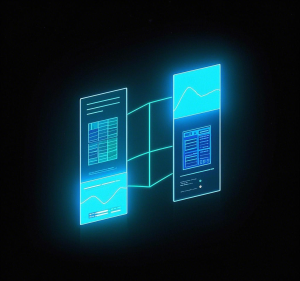Bridging Digital Divides Through Resilience and Innovation in Recent Global Crises
The concept of digital divides has persisted as a critical challenge in the 21st century, reflecting the unequal access to technology, digital literacy, and opportunities that exacerbate social and economic inequalities. While the term often evokes images of rural villages struggling with internet connectivity, recent global events have revealed that digital divides extend far beyond mere access—they encompass skills, affordability, and the capacity to adapt in times of crisis. In 2024 alone, several high-profile events underscored these divides, from the aftermath of natural disasters to the ongoing push for remote education and telehealth.
The 2024 Pacific Typhoon Season: Digital Divides in Disaster Response
In mid-2024, the Pacific region faced one of its most devastating typhoon seasons in decades. Typhoon Yagi, which struck the Philippines and Vietnam in September 2024, displaced over 1.2 million people and caused widespread infrastructure damage. While urban centers like Manila and Hanoi quickly mobilized digital tools for disaster response—such as real-time flood mapping apps and social media alerts—rural areas lagged significantly. The digital divides here were stark: only 43% of rural households in the Philippines had reliable internet access, compared to 87% in urban areas, according to a 2024 report by the Philippine Statistics Authority.
This gap had tangible consequences. In rural Leyte, for instance, local governments struggled to disseminate evacuation orders, as many residents lacked smartphones or stable connections. A community leader in Leyte noted, “We had to rely on barangay loudspeakers and word-of-mouth, which delayed evacuations by hours.” Meanwhile, urban residents accessed government apps like the Philippine Red Cross’s disaster tracker, which provided live updates on shelter locations and emergency contacts. The digital divides amplified the vulnerability of rural communities, where access to technology could have meant the difference between timely evacuation and disaster.
Efforts to bridge these divides during the crisis were notable but insufficient. The Vietnamese government, in collaboration with tech firms like Viettel, deployed mobile internet units to some affected areas, reaching an estimated 200,000 people within two weeks. However, logistical challenges—flooded roads, power outages—limited their impact. A post-typhoon survey by the Asian Development Bank revealed that 68% of rural respondents felt “completely disconnected” from digital aid resources, underscoring the depth of the digital divides in crisis settings.
| Region | Internet Access (% of Households) | Smartphone Ownership (%) | Access to Disaster Apps (%) |
|---|---|---|---|
| Urban Philippines | 87% | 79% | 65% |
| Rural Philippines | 43% | 38% | 12% |
| Urban Vietnam | 82% | 75% | 58% |
| Rural Vietnam | 39% | 34% | 15% |
This table illustrates the stark disparities in technology access, which directly influenced disaster preparedness and recovery. Researchers studying digital divides can use such data to advocate for targeted infrastructure investments, particularly in rural areas prone to natural disasters. The typhoon season highlighted not just access gaps but also the need for digital literacy programs—knowing how to use disaster apps was as critical as having them available.
The 2024 Global Push for Remote Education: Digital Divides in Learning Continuity
Another hotspot event of 2024 was the global push to sustain remote education, spurred by lingering effects of the COVID-19 pandemic and new public health measures in response to emerging variants. In the United States, the Department of Education reported that 15% of K-12 students—roughly 8 million children—lacked reliable internet access at home as of early 2024. This figure, while an improvement from 2020’s 20%, still revealed persistent digital divides, particularly among low-income and minority communities.
In California, for example, the Los Angeles Unified School District (LAUSD) faced scrutiny when a hybrid learning mandate in March 2024 left thousands of students unable to participate. A district survey found that 22% of students in South Los Angeles, a predominantly Black and Latino area, had no access to devices or stable Wi-Fi, compared to just 4% in wealthier Westside neighborhoods. The digital divides here were not just about access but also about quality—students with shared devices or slow connections struggled to engage in live Zoom classes or access educational platforms like Khan Academy.
Nonprofits and tech companies stepped in to address these gaps. The #ConnectKidsNow campaign, launched by AT&T and the nonprofit EveryoneOn, distributed 50,000 refurbished laptops and free hotspots to low-income families across the U.S. by June 2024. While impactful, the initiative reached only a fraction of those in need. Moreover, digital literacy emerged as a secondary barrier: a study by the National Digital Inclusion Alliance found that 30% of parents in underserved communities lacked the skills to help their children navigate online learning tools, further deepening the digital divides.
Internationally, similar challenges arose. In India, the government’s DIKSHA platform, which offers free educational content, saw a surge in usage—over 300 million downloads by mid-2024. Yet, a UNESCO report noted that 240 million Indian children, primarily in rural areas, remained excluded due to lack of devices or connectivity. The digital divides in education underscored a global truth: technology alone cannot bridge gaps without addressing systemic inequities in access, affordability, and skills.
Telehealth Expansion in 2024: Digital Divides in Healthcare Access
The third major event of 2024 was the rapid expansion of telehealth services, driven by aging populations and strained healthcare systems. In the United Kingdom, the National Health Service (NHS) reported that telehealth consultations rose by 40% in 2024, totaling 28 million virtual appointments. While this shift improved access for many, it also exposed digital divides, particularly among elderly and low-income patients.
In rural Wales, for instance, a 2024 NHS audit found that 35% of patients over 65 lacked the devices or internet speed needed for video consultations. Additionally, 28% reported discomfort with digital platforms, citing a lack of training or familiarity. These digital divides led to missed appointments and delayed care—critical issues for a demographic already at higher risk of chronic illness. A patient in Gwynedd shared, “I tried to book a virtual appointment, but my phone couldn’t handle the app, and I didn’t know how to fix it.”
Urban areas fared better but weren’t immune. In London, low-income families struggled with data costs; a British Telecom survey revealed that 15% of households earning less than £20,000 annually skipped telehealth appointments due to unaffordable mobile data plans. The digital divides in telehealth highlighted a dual challenge: ensuring access to technology and building the confidence to use it effectively.
Governments and healthcare providers responded with mixed success. The NHS launched a “Digital Buddies” program, pairing tech-savvy volunteers with elderly patients to teach them how to use telehealth apps. By October 2024, the program had trained 10,000 seniors, but demand far outstripped supply. Meanwhile, in the U.S., the Federal Communications Commission allocated $200 million to expand broadband for telehealth in rural areas, though implementation delays meant many patients saw no immediate benefits.
| Demographic | Access to Telehealth Devices (%) | Comfort with Telehealth Apps (%) | Missed Appointments Due to Tech Issues (%) |
|---|---|---|---|
| UK Rural Elderly (65+) | 65% | 42% | 35% |
| UK Urban Low-Income | 78% | 55% | 20% |
| US Rural Patients | 62% | 48% | 30% |
This table underscores the intersection of access and literacy in telehealth, offering researchers a lens to explore how digital divides impact health equity. Future studies could focus on scalable training models or subsidized data plans to mitigate these gaps.
Broader Implications and Research Value of Digital Divides
The events of 2024—typhoon recovery, remote education, and telehealth expansion—illustrate that digital divides are not static; they evolve with context and crisis. They also reveal a recurring pattern: while technology offers solutions, its uneven distribution and usability exacerbate existing inequalities. For researchers, these events provide rich case studies to explore the multifaceted nature of digital divides, from infrastructure to cultural barriers.
One key takeaway is the need for intersectional approaches. Digital divides often overlap with other forms of disadvantage—rural vs. urban, young vs. old, rich vs. poor. A 2024 study by the International Telecommunication Union (ITU) found that globally, 3.7 billion people remain offline, with 72% living in low-income countries. Yet even in high-income nations, as seen in the U.S. and UK, micro-level divides persist. Researchers can build on this by examining how policies targeting one aspect of digital divides—say, broadband expansion—might inadvertently neglect others, like digital literacy.
Another area for research is the role of public-private partnerships. The involvement of companies like AT&T in education and Viettel in disaster response shows promise, but questions of scalability and equity remain. How can such initiatives be designed to prioritize the most marginalized without widening digital divides elsewhere? Longitudinal studies tracking the outcomes of 2024’s interventions could provide valuable data.
Finally, the human element of digital divides deserves more attention. Beyond statistics, the stories of rural Filipinos waiting for evacuation alerts, Los Angeles students sharing a single laptop, or Welsh seniors missing doctor appointments reveal the emotional and social toll of these gaps. Qualitative research capturing these experiences can inform more empathetic, user-centered solutions.
Toward a Future Without Digital Divides
The events of 2024 have made one thing clear: digital divides are not just a technological issue but a societal one, deeply intertwined with equity, resilience, and opportunity. Addressing them requires more than patchwork solutions—it demands coordinated efforts across governments, industries, and communities. From disaster-stricken regions to virtual classrooms and telehealth platforms, the stakes of bridging digital divides have never been higher.
For researchers, policymakers, and advocates, the path forward lies in understanding these divides as dynamic and context-specific. By leveraging data, as seen in the tables above, and grounding solutions in real-world needs, we can move toward a future where technology unites rather than divides. The crises of 2024 are a wake-up call; the question is whether we’ll heed it with the urgency and innovation it demands. 🌐
